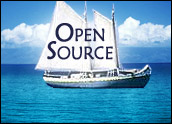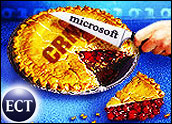
Two things impressed me about Salesforce.com’s Spring ’07 release: the community portal and the influence of the IdeaExchange on the direction of the product. A lot of people point to the portal as the more significant and I suppose it is, but maybe only by a whisker.
At the end of the day, each is really a single side of the same coin. Each is about the importance of capturing customer feedback or, as I like to say, the voice of the customer, to better understand what can make a product better and more desirable to customers. What’s happening here is sometimes called the co-creation of value and, as Eric von Hippel points out in his book, Democratizing Innovation, it can be a powerful driver.
Familiar Process
Von Hippel shows that this co-creation of value has been going on for a long time. As one of his examples he shows how the steam engine was perfected in the Midlands of England in the 1700s by groups of similarly minded people meeting to share ideas about the engines and how to make them more powerful, reliable and smaller.
Early inefficient models were very big and barely useful. If that doesn’t sound like a disruptive innovation, I don’t know what does. What was disrupted? The horse and other forms of muscle power.
What is often overlooked in this tale is that the people who met were, on one level or another, competitors in coal mining or other industries that used steam engines, but it didn’t stop them from collaborating to perfect a tool they all used.
With the IdeaExchange and the portal, Salesforce.com is trying for the same democratization of innovation, and I think this will be a long-term trend that is picked up by others.
Customer Feedback
Capturing feedback from customers is only one way of gathering the voice of the customer though, and it has some drawbacks because it only captures what the customer is thinking about in the moment and decides to volunteer. It captures the greatest pain points, but it acts passively like a net placed in a stream collecting anything that floats by.
The next stage in customer feedback management should be compared to active fishing where you bait a hook and go after specific creatures or, in this case, information.
All that aside, the Spring ’07 release of Salesforce.com is built almost entirely on suggestions from customers captured in the IdeaExchange. By extension, the company seems to be saying, “If we can do it, so can you. Look at the results.”
That’s all well and good, but it seems like there should be some fine print for such an assertion. Any day now, I expect to see any number of new or revived portal companies climbing on board the bandwagon to announce that they can deliver portals or even communities of interest better, faster and cheaper, to which I say, hold on.
Power of the People
At the outset we should ask what makes this process successful, and the answer is not the technology but the community.
In von Hippel’s example the only technology was the steam engine, it was the people organized as a community of interest that did the heavy lifting. It can be argued that a community is on the cusp between software and a service because although technology might capture the information it is far from essential, it’s the people who make up the community which uses the technology that makes the difference.
The people at Communispace seem to have the idea of community down to a science and, according to them, a community needs to enable three things.
First, it must build trust among members because people aren’t going to tell you anything of value if they think someone will pounce on their ideas as dumb or ridicule them personally for having them.
With trust as the foundation, individuals will feel free to reveal their ideas including those that are top of mind as well as ideas that reveal deeper insights into future use and need.
Finally, there has to be authentic communication in which all parties accept all the incoming information, good, bad or indifferent. A real community shares information among all participants and it is not simply a two-party dialog between the customer and the vendor.
The Right Foundation
The very concept of community is diametrically opposite from the open food fights that characterize so much of public debate today.
Think of a sports or political analysis show on TV today where guests and commentators run up to the edge of insulting others and where people talk over one another and you have a perfect picture of what a community is not. The question that springs to mind as soon as I write this is, are we still capable as a society of hosting a real community?
The good news, according to Communispace is, yes, we are still capable; they do it all the time. Nevertheless, the foundation of the community is not the technology that enables it on the Web or elsewhere, it’s in the people of the community and how they are managed.
There are methods and techniques we all have to understand before communities become widely dispersed and effective. In a lot of ways communities represent the delivery mechanism for all of CRM’s promise. I expect this aspect of the front office, which ironically chafes at being described as part of CRM, will be one of CRM’s important growth areas.
Denis Pombriant runs the Beagle Research Group, a CRM market research firm and consultancy. Pombriant’s research concentrates on evolving product ideas and emerging companies in the sales, marketing and call center disciplines. His research is freely distributed through a blog and Web site. He is working on a book and can be reached at [email protected].






















































